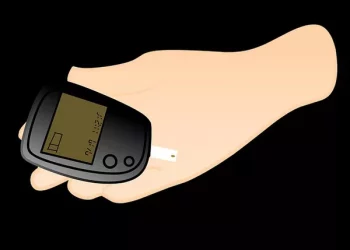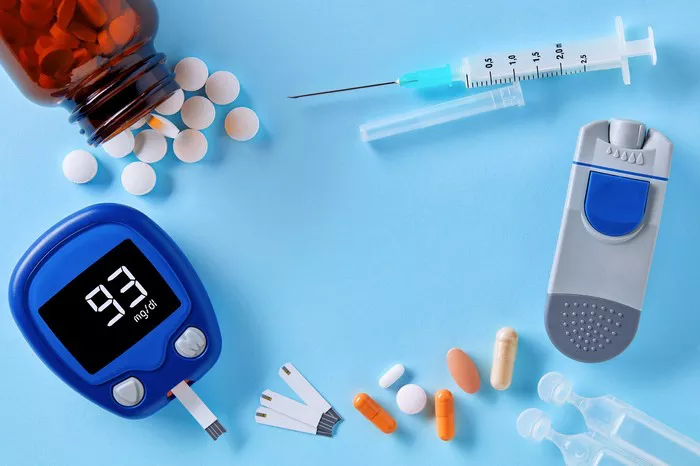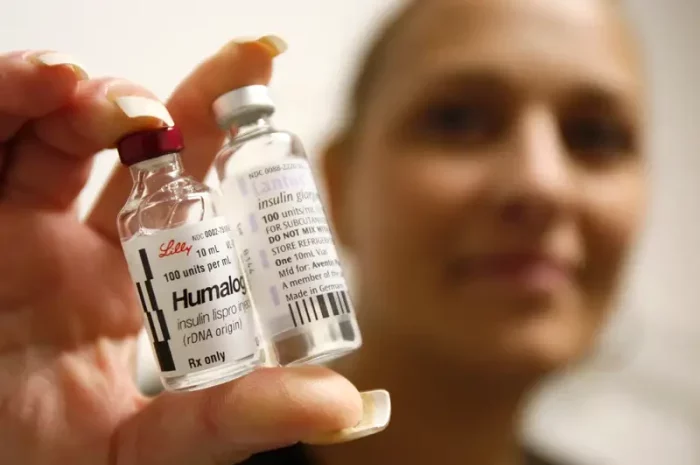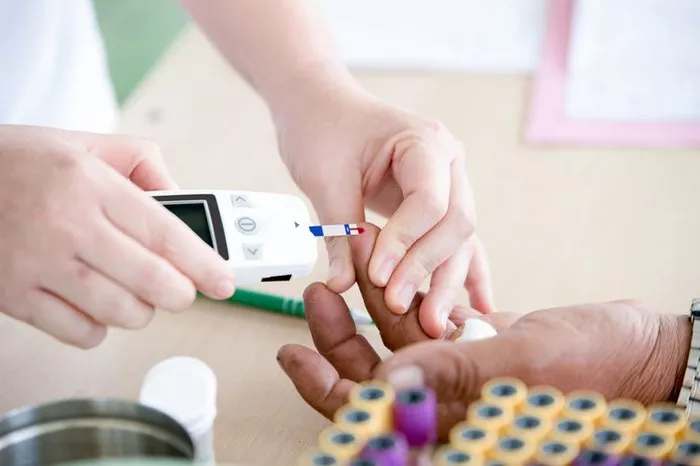Insulin-dependent diabetes, also known as type 1 diabetes mellitus, is a chronic autoimmune disorder characterized by the destruction of pancreatic beta cells, leading to an absolute deficiency of insulin production. Individuals with type 1 diabetes require lifelong insulin therapy to survive and maintain normal blood sugar levels. In this comprehensive article, we will explore the different types of insulin-dependent diabetes, delve into the underlying causes and risk factors, and discuss the management strategies for this condition.
Understanding Insulin-Dependent Diabetes
Insulin-dependent diabetes, commonly referred to as type 1 diabetes mellitus (T1DM), is a form of diabetes characterized by the immune-mediated destruction of insulin-producing beta cells in the pancreatic islets of Langerhans. This autoimmune attack leads to a significant reduction or complete absence of endogenous insulin secretion, resulting in hyperglycemia and metabolic disturbances.
Types of Insulin-Dependent Diabetes
Insulin-dependent diabetes can be classified into several types based on various criteria, including age of onset, etiology, and clinical features. The main types of insulin-dependent diabetes include:
1. Type 1A Diabetes: Type 1A diabetes, also known as autoimmune diabetes, is the most common form of insulin-dependent diabetes mellitus. It occurs as a result of autoimmune destruction of pancreatic beta cells mediated by T lymphocytes and autoantibodies targeting beta cell antigens, such as insulin, glutamic acid decarboxylase (GAD), and islet cell antigens (ICA). Type 1A diabetes typically presents in childhood or adolescence but can occur at any age.
2. Type 1B Diabetes: Type 1B diabetes, also known as idiopathic or non-autoimmune diabetes, is a rare form of insulin-dependent diabetes characterized by the absence of autoantibodies and other markers of autoimmunity. The exact cause of type 1B diabetes is unknown, but it is believed to result from a combination of genetic, environmental, and possibly viral factors. Type 1B diabetes tends to occur in individuals of African, Asian, or Hispanic descent and often presents in adulthood.
3. Latent Autoimmune Diabetes in Adults (LADA): LADA is a distinct form of autoimmune diabetes that shares features of both type 1 and type 2 diabetes. It is characterized by a slower onset of autoimmune destruction of beta cells compared to classical type 1 diabetes, typically occurring in adults over the age of 30. Individuals with LADA often present with autoimmune markers, such as autoantibodies against GAD, but may initially be misdiagnosed as having type 2 diabetes due to their age at onset and relatively preserved beta cell function.
Causes and Risk Factors
The exact cause of insulin-dependent diabetes remains incompletely understood, but it is believed to result from a complex interplay of genetic, environmental, and immunological factors. The following are some of the key factors implicated in the development of insulin-dependent diabetes:
1. Genetic Predisposition: Genetic susceptibility plays a significant role in the development of insulin-dependent diabetes, with certain human leukocyte antigen (HLA) alleles, such as HLA-DR3 and HLA-DR4, being strongly associated with increased risk. Other genetic factors, including polymorphisms in genes involved in immune regulation and beta cell function, may also contribute to susceptibility.
2. Environmental Triggers: Environmental factors, such as viral infections (e.g., enteroviruses), dietary factors (e.g., early exposure to cow’s milk), and environmental toxins, may trigger or accelerate the autoimmune destruction of pancreatic beta cells in genetically susceptible individuals.
3. Immune Dysregulation: Insulin-dependent diabetes is characterized by dysregulation of the immune system, leading to the activation of autoreactive T lymphocytes and the production of autoantibodies targeting beta cell antigens. Abnormalities in immune tolerance mechanisms and defects in regulatory T cells may contribute to the breakdown of self-tolerance and the development of autoimmune diabetes.
4. Other Factors: Other factors, such as early childhood infections, low vitamin D levels, and gut microbiota composition, have also been implicated in the pathogenesis of insulin-dependent diabetes, although their precise roles remain to be elucidated.
Clinical Presentation
Insulin-dependent diabetes mellitus typically presents with classic symptoms of hyperglycemia, including polyuria (frequent urination), polydipsia (excessive thirst), polyphagia (increased hunger), weight loss, fatigue, and blurred vision. In severe cases, individuals may develop diabetic ketoacidosis (DKA), a life-threatening complication characterized by hyperglycemia, ketosis, metabolic acidosis, and dehydration. Diagnosis of insulin-dependent diabetes is confirmed based on clinical symptoms, laboratory tests demonstrating hyperglycemia and ketosis, and detection of autoantibodies targeting beta cell antigens.
Management Strategies
Management of insulin-dependent diabetes mellitus involves a multidisciplinary approach aimed at achieving and maintaining optimal blood sugar control, preventing acute and chronic complications, and improving quality of life. Key components of the management plan include:
1. Insulin Therapy: The cornerstone of treatment for insulin-dependent diabetes is exogenous insulin therapy, which aims to replace deficient insulin secretion and regulate blood sugar levels effectively. Insulin therapy may involve multiple daily injections or continuous subcutaneous insulin infusion (insulin pump therapy) and is tailored to the individual needs and preferences of the patient.
2. Blood Sugar Monitoring: Regular monitoring of blood sugar levels, either through self-monitoring of blood glucose (SMBG) or continuous glucose monitoring (CGM), is essential for assessing glycemic control, detecting hypo- and hyperglycemia, and adjusting insulin doses accordingly.
3. Nutrition Therapy: A balanced diet that emphasizes whole grains, fruits, vegetables, lean proteins, and healthy fats is essential for managing blood sugar levels and promoting overall health in individuals with insulin-dependent diabetes. Carbohydrate counting, meal timing, and portion control are important components of nutrition therapy.
4. Physical Activity: Regular physical activity, including aerobic exercise, strength training, and flexibility exercises, is beneficial for improving insulin sensitivity, controlling weight, and reducing the risk of cardiovascular complications in individuals with insulin-dependent diabetes. Exercise should be tailored to the individual’s fitness level and medical condition, with close monitoring of blood sugar levels before, during, and after exercise.
5. Education and Support: Comprehensive education and ongoing support from healthcare providers, diabetes educators, and support groups are essential for empowering individuals with insulin-dependent diabetes to manage their condition effectively, make informed decisions about their care, and cope with the psychosocial aspects of living with a chronic disease.
6. Complications Prevention: Preventive measures, such as regular screening for diabetic complications (e.g., retinopathy, nephropathy, neuropathy), management of cardiovascular risk factors (e.g., hypertension, dyslipidemia), and lifestyle modifications (e.g., smoking cessation, weight management), are essential for reducing the risk of long-term complications associated with insulin-dependent diabetes.
Conclusion
Insulin-dependent diabetes mellitus, characterized by the autoimmune destruction of pancreatic beta cells, poses significant challenges for affected individuals and healthcare providers. Despite advances in our understanding of the pathogenesis and management of insulin-dependent diabetes, many unanswered questions remain, highlighting the need for continued research and innovation in this field. By elucidating the different types of insulin-dependent diabetes, exploring the underlying causes and risk factors, and discussing the management strategies for this condition, we aim to raise awareness, promote early detection, and improve outcomes for individuals living with insulin-dependent diabetes mellitus. Through a collaborative and holistic approach to care, we can empower individuals with insulin-dependent diabetes to lead fulfilling lives and achieve optimal health and well-being.



























